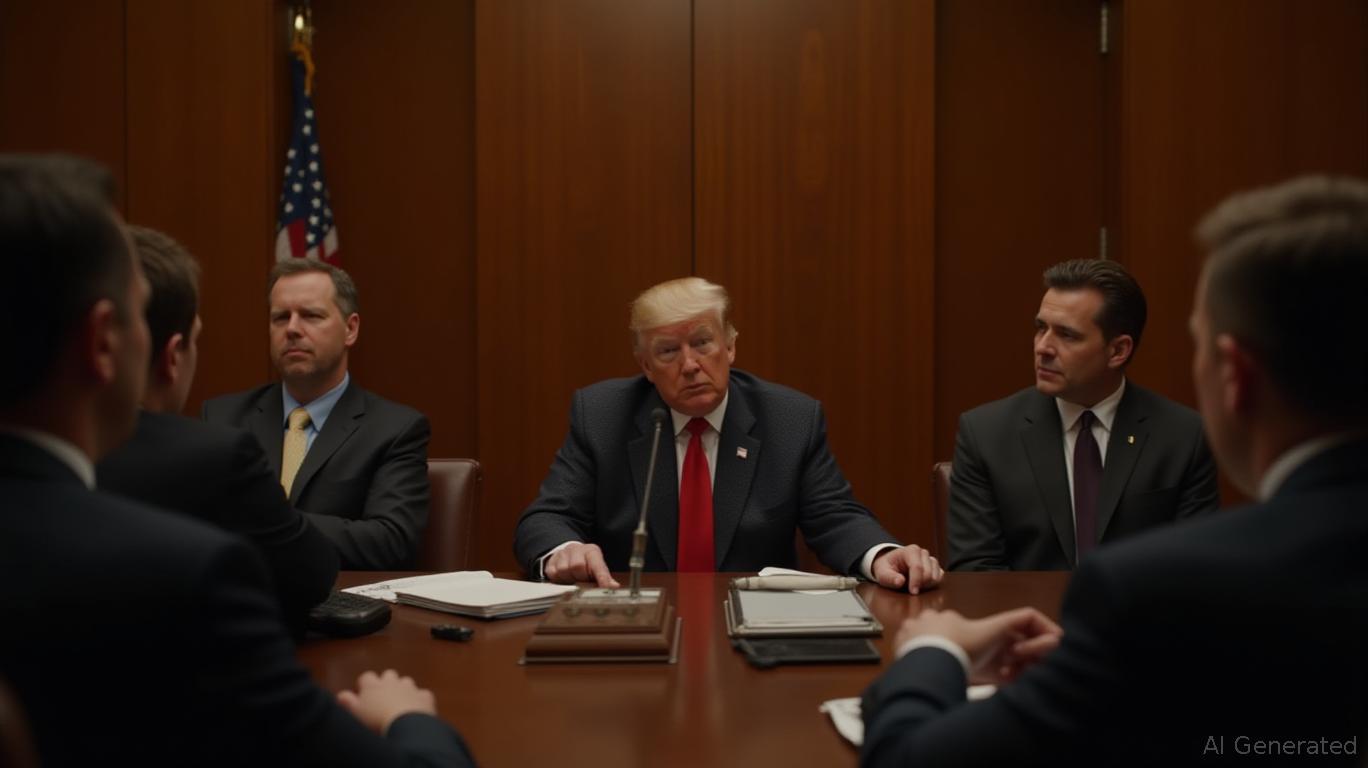Landmark IEEPA Lawsuit Questions President's Authority to Enact Wide-Ranging Tariffs
- U.S. Supreme Court will review Trump's IEEPA tariffs on November 5, testing presidential authority to impose broad import duties. - Lower courts ruled against tariffs, citing "major questions doctrine" requiring clear congressional authorization for policies of vast economic significance. - Case could redefine executive-legislative power balance, with $89B in collected tariffs at risk and potential financial burdens on importers/taxpayers. - Legal scholars warn IEEPA tariff authorization would create unc
The U.S. Supreme Court is scheduled to hear oral arguments on November 5 in a pivotal case that will examine President Donald Trump's power to enact broad tariffs under the International Emergency Economic Powers Act (IEEPA) of 1977, as reported by
The central question is whether Trump exceeded his legal powers by invoking IEEPA to levy tariffs—ranging from 10% to 50%—on imports from nearly every trading partner,

The implications are enormous. By September 2025, tariffs enacted under IEEPA are projected to have brought in $89 billion, helping to reduce the federal deficit and fund programs such as port fees for ships linked to China, according to
Constitutional experts and advocacy organizations have voiced concerns, pointing out that Article I of the Constitution gives Congress the authority to "lay and collect duties," a responsibility it has traditionally delegated to the executive only under certain circumstances, as reported by ABC News. The Brennan Center for Justice contends that permitting IEEPA to justify tariffs would amount to an "unconstitutional delegation" of legislative power, undermining checks on presidential authority. In contrast, the Trump administration argues that striking down the tariffs would weaken America’s leverage in international trade talks and embolden foreign rivals.
The possibility of Trump attending the hearing lends additional significance to the case. While previous presidents have participated in Supreme Court ceremonies or appeared as attorneys, none have sat in on oral arguments, the Japan Times notes. His attendance would highlight the personal importance of the case and could signal either the administration’s confidence or its sense of urgency as the justices deliberate. The Supreme Court’s ruling, anticipated by the end of the year, will ultimately decide whether the president’s tariff approach will be upheld or struck down amid legal and constitutional scrutiny.
Disclaimer: The content of this article solely reflects the author's opinion and does not represent the platform in any capacity. This article is not intended to serve as a reference for making investment decisions.
You may also like
Ethereum News Today: Ethereum Faces a Pivotal Moment as Sellers Stand Firm While Bulls Anticipate a Rally to $16K by 2025
- Ethereum dropped to $3,000 in 2025 but rebounded to $3,324, supported by technical levels and institutional accumulation, including BitMine’s $300M ETH purchase. - ETF redemptions and Bitcoin’s weakness (0.86 correlation) worsened market pressure, with $1.78B in crypto liquidations and $135.7M Ethereum ETF outflows reported. - Analysts remain bullish, projecting a potential $16,000 rebound by 2025 if ETH/BTC ratio normalizes and regulatory clarity boosts stablecoin demand, despite 200-day EMA resistance

Bitcoin News Update: MicroStrategy's Bold Bitcoin Strategy Hits Key Milestone as mNAV Approaches Parity
- MicroStrategy's mNAV ratio nears 1.04, signaling a potential inflection point in its Bitcoin-centric strategy as holdings reach 641,205 BTC valued at $69B. - CEO Phong Le explores Bitcoin derivatives to maintain dividends amid equity dilution risks, as Bitcoin's price dips below $108,000 for the first time since 2018. - Market volatility and U.S.-China tensions, coupled with $789M in Bitcoin ETF outflows, highlight risks for MicroStrategy's single-asset exposure and leverage. - The firm raised $19.8B in
XRP News Today: XRP Faces Impending Death Cross as Bearish Pressure Outpaces Retail Interest
- XRP faces prolonged bearish pressure as technical indicators, weak retail demand, and liquidity concerns align against a rebound. - Futures open interest dropped 61% to $3.54B since October, while RSI near 41 and MACD signals reinforce downward momentum. - Ripple's monthly 1B XRP unlocks raise short-term selling risks, though institutional ODL adoption processed $1.3T in cross-border payments. - Death cross threat (50-day SMA approaching 200-day SMA) and macroeconomic uncertainties deepen bearish sentime

DASH surges 42.76% in a week: Q3 revenue surpasses expectations, but EPS falls short; 2026 investment strategy sparks after-hours decline
- DASH surged 42.76% in 7 days despite a 16% post-earnings selloff on Nov. 5, 2025. - Q3 revenue beat estimates ($3.45B vs. $3.36B), but EPS fell below $0.68–$0.69 consensus. - 2026 spending plans and Deliveroo acquisition costs triggered profit concerns, offsetting strong 13.8% net margin. - Analysts focus on capital allocation and $5B buyback potential amid near-term volatility from reinvestment emphasis.